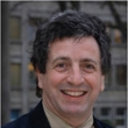Frequency, characterisation and therapies of fatigue after stroke.
מילות מפתח
תַקצִיר
Post-stroke objective or subjective fatigue occurs in around 50% of patients and is frequent (30%) even after minor strokes. It can last more than one year after the event, and is characterised by a different quality from usual fatigue and good response to rest. Associated risk factors include age, single patients, female, disability, depression, attentional impairment and sometimes posterior strokes, but also inactivity, overweight, alcohol and sleep apnoea syndrome. There are few therapy studies, but treatment may include low-intensity training, cognitive therapy, treatment of associated depression, wakefulness-promoting agents like modafinil, correction of risk factors and adaptation of activities.


